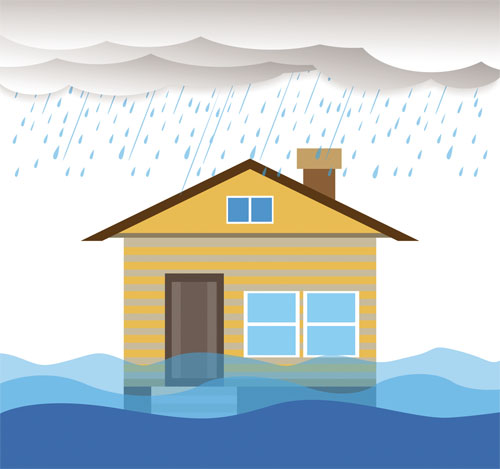Fall Home Maintenance Checklist
 Fall is officially here, which means there’s no time to waste in getting your home ready for the season. This is a great time of year to finish those bigger projects you’ve been meaning to get to as well as regular maintenance chores before colder weather sets in. Here are the top items that should be on your list this fall so you’ll be ready when winter rolls around.
Fall is officially here, which means there’s no time to waste in getting your home ready for the season. This is a great time of year to finish those bigger projects you’ve been meaning to get to as well as regular maintenance chores before colder weather sets in. Here are the top items that should be on your list this fall so you’ll be ready when winter rolls around.
Clean gutters
We know this isn’t your favorite job, but it must be done. Once your trees have shed their leaves, it’s time to clean out the gutters and downspouts. Clogged gutters can damage your roof and siding and cause water to seep into the foundation. Get up on the ladder and get them cleaned out before the next big storm.
Shut off outdoor faucets
If you live in an area that dips below freezing, protect your pipes by shutting off exterior faucets. If water freezes inside your pipes, it will cause them to expand and possibly crack – which could lead to serious problems. Invest in quality plumbing tools so you will be ready for anything simple like some drain cleaning or for a needed emergency plumbing repair. Drain garden hoses and store them until next spring. You may hire professional plumbers to help you winterize your plumbing system.
Winterize sprinklers
Freezing temperatures can wreak havoc on sprinkler systems. Drain valves to remove water from the system. If your system doesn’t have valves, hire a pro to blow the water out. Shake water out of sprinkler heads.
Clean and stow garden tools
Give all your garden tools like spades, shovels, and pruning shears a good cleaning before stowing them away for the season. Also clean your lawn mower and either drain the gas or add fuel stabilizer. Gas can deteriorate over the winter, which could damage the engine if left in the mower.
Seal cracks
Keep out the cold winter air by sealing cracks around your home’s exterior. Look for gaps between trim and siding, around doors and windows, and anywhere pipes or wires enter the house. Spread a small bead of caulk in these areas to keep the cold air from getting inside. You’ll stay warm and save money on your heating bills.
Check smoke detectors
The best time to check smoke and carbon monoxide detectors is during the change of the seasons. If you want to remember every year, have it coincide with daylight savings time. Replace batteries as needed. Also check your fire extinguishers to make sure they have not expired.
Clean the fireplace
If you’re looking forward to cozy nights around the fire, then now is the time to have your fireplace cleaned. Make sure the damper opens properly and that there are no animals nesting inside. You should also have the creosote cleaned every two years. Make an appointment to have yours professionally cleaned if it’s time.
Clean dryer vents
Lint can get trapped inside your dryer vents, which could cause a fire. Static electricity, more prevalent during cold, dry weather, can ignite lint. Fall is the best time to clean those dryer vents.
Check the furnace
You’ll want to stay nice and toasty warm this winter. Head off any potential problems by having your furnace serviced now. A professional can complete a check-up of your furnace for around $100 to make sure it’s in tip-top shape. In addition, change your furnace filters.
Compliments of Virtual Results












 Labor Day weekend is the unofficial end of the summer season. If you’ve been thinking about selling your home, you may be wondering if you’ve missed the boat. Spring and summer are often thought of as the best seasons for selling your home. But don’t be discouraged! Fall can also be a great time to put your home on the market. Here are our best tips for making the most of your post-Labor Day sale.
Labor Day weekend is the unofficial end of the summer season. If you’ve been thinking about selling your home, you may be wondering if you’ve missed the boat. Spring and summer are often thought of as the best seasons for selling your home. But don’t be discouraged! Fall can also be a great time to put your home on the market. Here are our best tips for making the most of your post-Labor Day sale.

 Catch Our Feed
Catch Our Feed Subscribe via Email
Subscribe via Email Follow Our Tweets
Follow Our Tweets Friend Us On Facebook
Friend Us On Facebook Watch Us On Youtube
Watch Us On Youtube